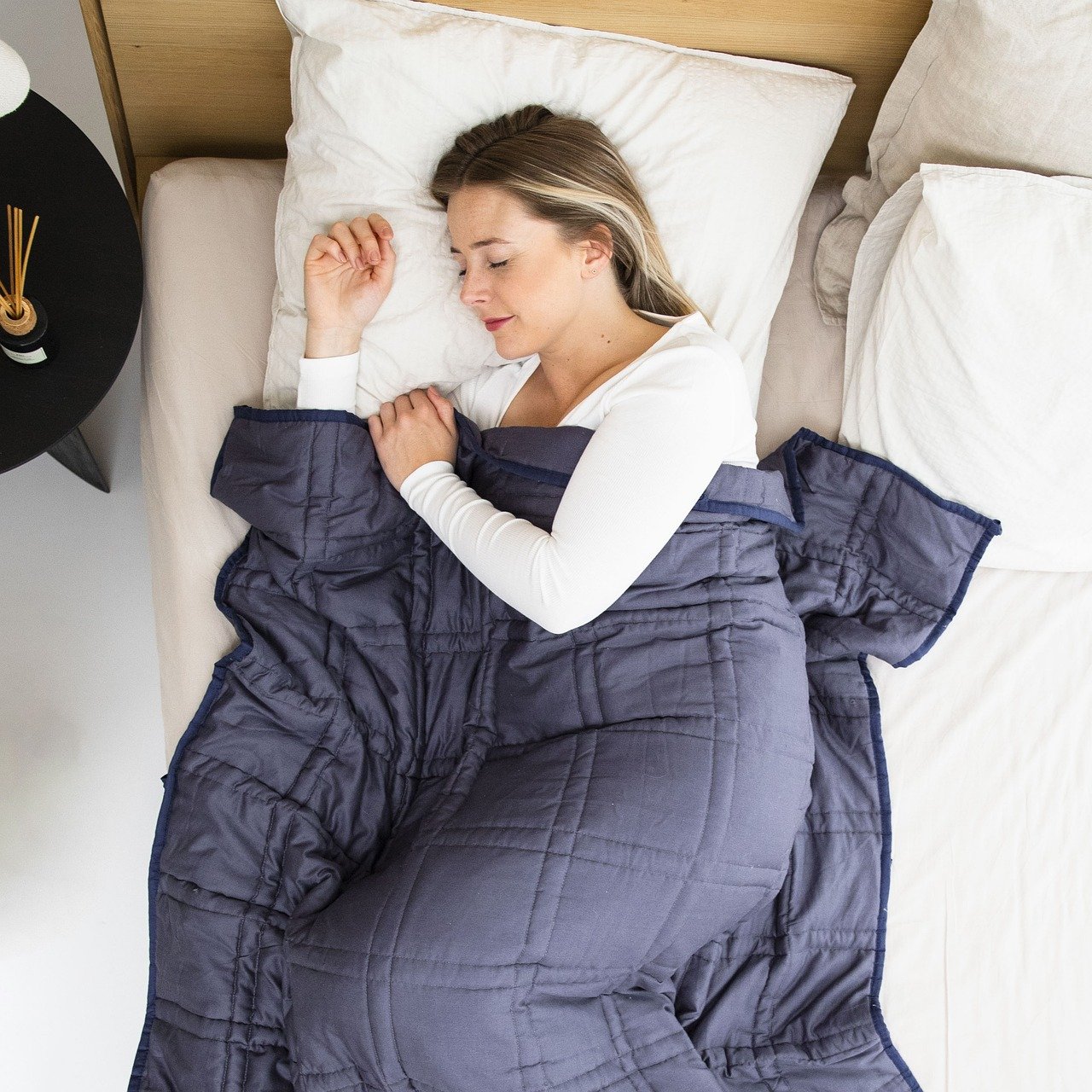The Role of Sensory Stimulation in Behavior Modification
Have you ever noticed how a particular song can instantly lift your mood, or how the scent of fresh cookies baking can evoke warm childhood memories? This is the power of sensory stimulation, a fascinating phenomenon that plays a crucial role in shaping our behaviors and emotions. In this article, we will explore how sensory inputs—ranging from sounds and sights to touches and tastes—can be harnessed to modify behavior effectively. Whether in therapeutic settings or everyday life, understanding sensory stimulation can empower us to create environments that promote positive change.
Sensory stimulation is not just a buzzword; it's a fundamental aspect of human experience. Our senses are constantly bombarded with information from the environment, and this sensory input can influence our feelings, thoughts, and actions in profound ways. For instance, think about how the vibrant colors of a sunset can make you feel peaceful or how the sound of a baby laughing can bring a smile to your face. These sensory experiences can trigger emotional responses that lead to behavioral changes, making them a powerful tool in both therapy and personal development.
In therapeutic contexts, sensory stimulation is often employed to help individuals with various challenges. For example, children with autism may benefit from specific sensory inputs that help them focus or calm down. By creating an environment rich in positive sensory experiences, therapists can facilitate better emotional regulation and behavioral outcomes. This is where the magic happens—when we understand and utilize the power of our senses, we can pave the way for meaningful behavior modification.
So, how does this all work? Sensory stimulation can be categorized into different types, each with its unique impact on behavior. From auditory stimulation, like music therapy, to tactile stimulation, such as therapeutic touch techniques, each form of sensory input plays a vital role in influencing our emotional landscape. In the following sections, we will delve deeper into these types of sensory stimulation, examining their applications and effectiveness in various settings.
By the end of this article, you will not only appreciate the significance of sensory experiences but also understand how to leverage them for behavior modification. Whether you're a therapist, educator, or simply someone looking to enhance your daily life, the insights gained here will empower you to create environments that foster positive behavioral changes. Let's dive into the world of sensory stimulation and uncover its secrets!
- What is sensory stimulation? Sensory stimulation refers to the activation of the senses—sight, sound, touch, taste, and smell—affecting emotions and behaviors.
- How does sensory stimulation help in therapy? It can create supportive environments that promote emotional regulation, focus, and overall well-being.
- Can sensory stimulation be used in everyday life? Absolutely! Simple changes, like playing calming music or using soothing scents, can enhance your daily experiences.
- What types of sensory stimulation are most effective? This varies by individual, but common types include auditory (music), visual (colors), and tactile (touch) stimulation.

Understanding Sensory Stimulation
Sensory stimulation is a fascinating concept that taps into the very essence of our human experience. It refers to the activation of our senses—sight, sound, touch, taste, and smell—and how these stimuli can influence our behavior and emotional state. Think about it: have you ever walked into a room filled with the scent of freshly baked cookies and felt an immediate sense of comfort and nostalgia? That’s sensory stimulation at work! It’s incredible how our senses can evoke memories, feelings, and even drive our actions.
Different types of sensory inputs can trigger various responses in our bodies and minds. For instance, the soothing sound of rain can calm a racing heart, while bright colors can energize and uplift our spirits. This relationship between sensory experiences and behavior is not just a matter of personal preference; it plays a crucial role in therapeutic settings as well. By understanding how sensory stimuli affect us, therapists can tailor their approaches to help individuals modify their behaviors and improve their emotional well-being.
To illustrate this further, let’s explore the types of sensory stimulation and their potential impacts:
- Visual Stimulation: Colors and images can evoke strong emotional responses. For example, warm colors like red and yellow can stimulate excitement, while cool colors like blue and green can promote tranquility.
- Auditory Stimulation: Sounds can significantly influence our mood. Upbeat music might energize us, while soft melodies can help us unwind.
- Tactile Stimulation: The sensation of touch can be incredibly powerful. A gentle hug can provide comfort, while a firm handshake can convey confidence.
- Olfactory Stimulation: Scents can trigger memories and emotions. The smell of lavender can promote relaxation, while citrus scents can invigorate.
- Gustatory Stimulation: Taste is deeply connected to memory and emotion, often influencing our behaviors around food and social interactions.
Understanding these types of sensory stimulation is essential not just for personal insight but also for professionals working in fields like psychology, education, and rehabilitation. By leveraging sensory inputs effectively, they can create environments that foster positive behaviors and emotional healing.
Moreover, sensory stimulation is not just limited to therapeutic contexts; it permeates our everyday lives. From the ambiance of a café to the colors in our homes, sensory experiences shape our interactions and perceptions. Imagine how a well-designed classroom can enhance learning outcomes by incorporating colors, sounds, and textures that stimulate students’ senses. It’s a powerful reminder that our environment plays a pivotal role in shaping who we are and how we behave.
In summary, sensory stimulation is a dynamic interplay between our senses and our behaviors. By recognizing and harnessing the power of sensory experiences, we can create more enriching environments that promote emotional well-being and positive behavior modification.

Types of Sensory Stimulation
Sensory stimulation comes in many forms, each uniquely designed to evoke responses from our minds and bodies. Understanding these types can unlock powerful pathways to behavior modification and emotional regulation. The five primary types of sensory stimulation are auditory, visual, tactile, olfactory, and gustatory. Each type plays a pivotal role in shaping our experiences and can be harnessed for various therapeutic purposes.
To dive deeper, let’s take a closer look at each of these sensory inputs:
| Type of Sensory Stimulation | Description | Therapeutic Applications |
|---|---|---|
| Auditory | Involves sounds, music, and noise that can influence mood and behavior. | Music therapy, soundscapes for relaxation. |
| Visual | Includes colors, images, and light that can evoke emotional responses. | Art therapy, color therapy in learning environments. |
| Tactile | Refers to touch sensations that can provide comfort and security. | Massage therapy, weighted products. |
| Olfactory | Involves scents and smells that can trigger memories and emotions. | Aromatherapy, scent-based relaxation techniques. |
| Gustatory | Relates to taste sensations that can influence mood and behavior. | Food therapy, taste-based mindfulness practices. |
Each of these sensory modalities can be strategically employed to enhance emotional well-being and behavioral outcomes. For instance, auditory stimulation can involve the soothing sounds of nature or the energizing beats of music, which can either calm the mind or boost productivity. Similarly, visual stimulation can transform a dull environment into a vibrant space filled with colors that uplift spirits and enhance focus.
Moreover, tactile stimulation can be particularly beneficial for individuals with sensory processing disorders. Techniques like gentle massage or the use of weighted blankets can provide the deep pressure needed to foster a sense of safety and calm. In contrast, olfactory stimulation can evoke powerful emotional responses; think of how a whiff of lavender can instantly transport you to a state of tranquility. Finally, gustatory stimulation can serve as a delightful reminder of comfort, where the taste of your favorite dish can bring back fond memories or even comfort during stressful times.
Incorporating these sensory experiences into daily life or therapeutic practices can create a rich tapestry of emotional and behavioral support. By understanding how each type of stimulation interacts with our senses, we can better tailor interventions that resonate with individual needs and preferences.
What is sensory stimulation?
Sensory stimulation refers to the activation of our senses—sight, sound, touch, taste, and smell. It plays a crucial role in shaping our behavior and emotional responses.
How can sensory stimulation be used in therapy?
Therapists use various forms of sensory stimulation, such as music, colors, or touch, to help clients manage emotions, improve focus, and modify behavior.
Are there specific types of sensory stimulation that work better for certain individuals?
Yes! Different individuals may respond better to specific types of sensory stimulation based on their personal preferences and sensory processing abilities.
Can sensory stimulation help with anxiety?
Absolutely! Techniques like music therapy, aromatherapy, and tactile stimulation (like weighted blankets) can significantly reduce anxiety levels.
Auditory Stimulation
Auditory stimulation is a fascinating concept that revolves around the sounds we hear every day. It's not just about music or noise; it's about how these sounds can profoundly influence our mood, behavior, and overall well-being. Think about it: have you ever noticed how a particular song can instantly lift your spirits or how the sound of rain can make you feel relaxed? This is the power of auditory stimulation at work!
Research shows that different types of sounds can evoke various emotional responses. For instance, soothing sounds, like gentle piano melodies or nature sounds, can promote relaxation and reduce stress. On the other hand, upbeat music can energize you, making you feel more alert and focused. This duality of auditory stimulation is what makes it such an effective tool in behavior modification.
In therapeutic settings, auditory stimulation can be harnessed in numerous ways. For example, therapists often use specific sound frequencies or music genres tailored to individual needs. By incorporating the right auditory elements into treatment plans, they can help clients manage anxiety, improve concentration, and even enhance social interactions. It's like having a personalized soundtrack that supports your emotional journey!
Moreover, the impact of sound isn't limited to music alone. Environmental sounds, such as the gentle rustling of leaves or the rhythmic crashing of ocean waves, can also play a significant role in shaping our behavior. These natural soundscapes can create a calming atmosphere, making them perfect for settings where relaxation and focus are essential. Imagine walking into a therapy room where the sounds of a tranquil forest greet you; it sets the stage for a peaceful experience, doesn’t it?
To illustrate the effectiveness of auditory stimulation, let's take a look at some practical applications:
| Type of Auditory Stimulation | Effect on Behavior | Therapeutic Use |
|---|---|---|
| Music Therapy | Enhances mood and emotional expression | Used in mental health treatment |
| Nature Sounds | Reduces stress and anxiety | Used in relaxation techniques |
| Upbeat Music | Increases energy and motivation | Used in physical rehabilitation |
In summary, auditory stimulation is a powerful influencer of our emotions and behaviors. By understanding and utilizing the effects of sound, we can create environments that promote healing and positive change. Whether through music therapy or the soothing sounds of nature, auditory stimulation offers a pathway to improved mental health and behavior modification.
Music Therapy
is more than just listening to your favorite tunes; it’s a powerful therapeutic tool that taps into the emotional and psychological aspects of sound. Imagine a world where a simple melody can lift your spirits, soothe your anxiety, or even help you express feelings that are hard to articulate. That’s the magic of music therapy! It’s a structured approach that uses music to promote emotional healing, enhance communication, and facilitate personal growth.
In the realm of mental health, music therapy has shown remarkable effectiveness. It can be tailored to meet the unique needs of individuals, making it a versatile option for various therapeutic settings. For instance, it can help individuals with depression find a voice for their feelings through songwriting or assist those with anxiety in finding calm through guided musical relaxation. The beauty of music therapy lies in its ability to connect with people on a deep emotional level, often surpassing traditional verbal communication.
Research has highlighted several key benefits of music therapy, including:
- Emotional Expression: Music provides a medium for individuals to express emotions that may be difficult to verbalize.
- Stress Reduction: Listening to calming music can lower cortisol levels, reducing stress and anxiety.
- Social Interaction: Group music therapy sessions foster a sense of community and belonging, which is crucial for emotional well-being.
- Cognitive Improvement: Engaging with music can enhance cognitive functions, such as memory and attention.
Music therapy isn’t just confined to clinical settings; it can also be integrated into everyday life. Whether you’re using upbeat songs to energize your morning routine or playing soothing melodies to unwind after a long day, the influence of music on our mood and behavior is profound. By consciously incorporating music into our daily lives, we can harness its therapeutic benefits and enhance our overall well-being.
Moreover, the versatility of music therapy extends to various populations, including children with autism, veterans with PTSD, and individuals recovering from substance abuse. Each group can experience tailored interventions that address their specific challenges and needs. For example, children might engage in interactive musical play to improve social skills, while veterans may find solace in songwriting to process their experiences.
In conclusion, music therapy is a dynamic and effective approach to behavior modification and emotional healing. Its ability to transcend language barriers and connect with individuals on an emotional level makes it a unique and powerful tool in therapeutic settings. So, the next time you find yourself feeling overwhelmed, consider turning to music as a source of comfort and healing—after all, sometimes a good song is all you need to change your mood!
Soundscapes and Environment
Imagine walking along a serene beach, the gentle sound of ocean waves lapping at the shore, mingling with the distant calls of seagulls. This is not just a picturesque scene; it's an example of how soundscapes can profoundly influence our emotions and behaviors. Soundscapes, which are the acoustic environments we inhabit, play a pivotal role in shaping our psychological state and overall well-being. In therapeutic settings, integrating natural soundscapes can create a calming atmosphere that fosters relaxation and enhances focus.
Research has shown that exposure to natural sounds can lower stress levels and promote a sense of tranquility. For instance, the soothing sounds of a forest, with rustling leaves and chirping birds, can transport individuals away from the chaos of daily life, allowing them to reconnect with their inner peace. This reconnection is vital, especially for those undergoing therapy, as it can facilitate emotional healing and behavioral change.
Incorporating soundscapes into therapeutic environments can be achieved in various ways. For example, therapists might play recordings of nature sounds during sessions, or even better, take clients outdoors to experience these sounds firsthand. This approach not only aids in relaxation but also encourages mindfulness, helping individuals to focus on the present moment.
Moreover, the design of spaces can also influence the sound environment. Acoustic architecture considers how sound interacts with physical spaces, ensuring that therapeutic rooms are designed to minimize distracting noises while enhancing soothing sounds. For instance, using soft materials that absorb sound can create a peaceful environment conducive to therapy. In contrast, environments filled with harsh, jarring sounds can lead to anxiety and stress, hindering the therapeutic process.
To illustrate the impact of soundscapes, here’s a comparison of different environments and their typical sound profiles:
| Environment | Typical Sounds | Emotional Impact |
|---|---|---|
| Urban City | Traffic, sirens, construction | Stress, anxiety |
| Forest | Birdsong, rustling leaves | Calm, relaxation |
| Beach | Waves, seagulls | Tranquility, peace |
| Quiet Room | Soft music, white noise | Focus, concentration |
In conclusion, soundscapes are more than just background noise; they are powerful tools that can be harnessed to influence behavior and emotional states. By thoughtfully integrating soundscapes into therapeutic practices and everyday life, we can create environments that not only soothe the mind but also promote positive behavioral changes. So, the next time you find yourself feeling overwhelmed, consider the sounds around you. Are they enhancing your experience, or are they contributing to your stress? The right soundscape could be just what you need to shift your perspective and improve your mental well-being.
- What are soundscapes? Soundscapes are the acoustic environments we experience, including all the sounds that surround us.
- How can soundscapes influence behavior? Different sound environments can evoke various emotional responses, which can lead to changes in behavior.
- Can soundscapes be used in therapy? Yes, soundscapes can be integrated into therapeutic settings to promote relaxation and aid in emotional healing.
- What are some examples of therapeutic soundscapes? Examples include nature sounds like ocean waves, forest ambiance, or gentle music.
Visual Stimulation
Visual stimulation is a fascinating area of study that encompasses everything we see around us, from the vibrant colors of a sunset to the intricate patterns on a butterfly's wings. Our eyes are like windows to the world, and what we see can profoundly influence our feelings and behaviors. Imagine walking into a room painted in soft blues and greens; you might feel relaxed and at ease. Conversely, a room filled with bright reds and oranges could energize you, making your heart race with excitement. This is the power of .
In therapeutic practices, visual stimulation plays a crucial role in shaping emotional responses and modifying behavior. For instance, therapists often use specific colors and images to evoke desired feelings or reactions in their clients. Research has shown that certain colors can trigger specific emotional responses. For example:
| Color | Emotional Response |
|---|---|
| Blue | Calmness and serenity |
| Red | Excitement and urgency |
| Yellow | Happiness and optimism |
| Green | Balance and tranquility |
Moreover, visual stimulation is not just about colors; it also involves the use of images and light. Bright, well-lit spaces can enhance focus and attention, making them ideal for learning environments. In contrast, dim lighting can create a cozy atmosphere, perfect for relaxation or reflection. This duality shows how visual elements can be strategically utilized in various settings to achieve specific outcomes.
Incorporating visual stimulation into therapy can take many forms. Art therapy, for example, encourages individuals to express themselves creatively through drawing, painting, or sculpting. This not only engages their visual senses but also allows them to explore their emotions in a safe space. By observing their creations, individuals may gain insights into their feelings and experiences, leading to positive behavior modification.
Furthermore, the use of visual aids, such as charts and diagrams, can significantly enhance understanding and retention of information. For children with learning difficulties, visual supports can clarify complex concepts and provide structure, making learning more accessible and enjoyable. It’s like giving them a roadmap in a world that can often feel chaotic and overwhelming.
In conclusion, visual stimulation is a powerful tool that can be harnessed for behavior modification and emotional regulation. By understanding how different visual elements affect us, we can create environments that promote well-being, learning, and growth. Whether it's through the calming effect of a serene landscape painting or the energizing power of bright colors, the visual world around us has the potential to shape our experiences in profound ways.
- What is sensory stimulation? Sensory stimulation refers to the activation of the senses, including sight, sound, touch, taste, and smell, which can influence behavior and emotions.
- How does visual stimulation affect behavior? Visual stimulation can evoke emotional responses, enhance focus, and facilitate learning, thus playing a significant role in behavior modification.
- Can art therapy be considered a form of visual stimulation? Yes, art therapy utilizes visual elements to help individuals express their emotions and can lead to insights and positive behavioral changes.
- How can colors influence mood? Different colors can trigger specific emotional responses; for example, blue can induce calmness, while red can evoke excitement.

The Impact of Tactile Stimulation
Tactile stimulation, or the sense of touch, plays a crucial role in our emotional and behavioral responses. It's fascinating how something as simple as touch can evoke a myriad of feelings and reactions. Think about it: when you're feeling down, a warm hug can instantly lift your spirits. This is the power of tactile stimulation! It connects us to others and can significantly influence our mood and behavior.
In therapeutic settings, tactile stimulation is often utilized to help individuals, especially those with sensory processing disorders. These individuals may struggle to interpret sensory information, leading to challenges in daily life. By incorporating tactile experiences into their therapy, practitioners can help these individuals learn to process and respond to sensory input more effectively. For example, activities that involve different textures can help desensitize or help individuals become more comfortable with varying levels of touch.
One effective method of tactile stimulation is through therapeutic touch techniques. These techniques, such as massage and deep pressure touch, are not just about relaxation; they also help regulate emotions. When someone receives a massage, their body releases endorphins, which are natural mood lifters. This can create a sense of calm and well-being, making it easier for individuals to manage their emotions and behaviors. In fact, studies have shown that regular massage therapy can lead to a significant reduction in anxiety and stress levels.
Another fascinating aspect of tactile stimulation is the use of weighted products. Weighted blankets and vests are becoming increasingly popular, especially among individuals who experience anxiety. The deep pressure stimulation they provide mimics the feeling of being hugged or held, which can promote a sense of security and calm. Research indicates that using these weighted products can help reduce anxiety levels and improve focus, making them an excellent tool for both children and adults.
Incorporating tactile stimulation into everyday life can be as simple as engaging in activities that involve touch. Here are a few examples:
- Playing with stress balls or putty
- Engaging in crafts that involve different textures
- Using fidget toys to help focus during tasks
These activities not only provide sensory input but also serve as a form of self-regulation. For instance, when a child is feeling overwhelmed, squeezing a stress ball can help them channel their energy and calm down. It's like giving them a tool to manage their emotions effectively!
In conclusion, tactile stimulation is more than just a physical sensation; it's a powerful tool for behavior modification and emotional regulation. By understanding and utilizing the impact of touch, we can create supportive environments that foster positive changes in behavior and emotional well-being.
- What is tactile stimulation?
Tactile stimulation refers to the sensory input received through touch, which can influence emotions and behaviors. - How does tactile stimulation help with anxiety?
Techniques like massage and the use of weighted products provide deep pressure, which can promote feelings of calm and security. - Can tactile activities be beneficial for children?
Absolutely! Engaging children in tactile activities can help them develop sensory processing skills and manage their emotions better.
Therapeutic Touch Techniques
When it comes to behavior modification, the power of touch is often underestimated. Therapeutic touch techniques, such as massage and deep pressure touch, can provide profound benefits not just for physical well-being, but also for emotional regulation. Imagine how a simple hug can instantly lift your spirits or how a gentle massage can melt away stress. This is the essence of therapeutic touch—it's not just about the physical act; it's about creating a connection that fosters healing.
Studies have shown that touch can trigger the release of oxytocin, often referred to as the "love hormone," which plays a crucial role in bonding and emotional well-being. Techniques like massage therapy, for instance, not only relax the body but also calm the mind, making it easier for individuals to manage their emotions and behaviors. The rhythmic pressure applied during a massage can soothe anxiety and promote a sense of safety, which is essential for those struggling with sensory processing disorders.
Moreover, deep pressure touch techniques can be particularly effective for individuals on the autism spectrum or those experiencing heightened sensory sensitivities. By applying firm yet gentle pressure, therapists can help clients feel more grounded, reducing feelings of chaos and overwhelm. This is akin to wrapping yourself in a cozy blanket on a chilly day; it creates a sense of comfort and security that can significantly ease anxiety.
In addition to traditional massage, there are several other therapeutic touch techniques worth exploring:
- Acupressure: This involves applying pressure to specific points on the body to relieve tension and promote relaxation.
- Rolfing: A form of deep tissue manipulation that focuses on aligning the body's structure, enhancing movement and reducing pain.
- Reflexology: A technique that applies pressure to specific reflex points on the feet, hands, or ears, which correspond to different body organs and systems.
Each of these techniques not only serves a therapeutic purpose but also helps individuals reconnect with their bodies, fostering a deeper awareness of their emotional states. This self-awareness is crucial for behavior modification, as it allows individuals to identify triggers and manage their responses more effectively.
In therapeutic settings, incorporating these touch techniques can create a holistic approach to treatment. For instance, a therapist might combine massage with mindfulness practices, encouraging clients to focus on their breath while receiving touch. This dual approach can amplify the benefits, making it easier for clients to integrate the lessons learned during therapy into their daily lives.
In summary, therapeutic touch techniques are a powerful tool in the arsenal of behavior modification strategies. By harnessing the innate power of touch, we can create environments that promote healing, emotional regulation, and ultimately, positive behavioral changes.
What is therapeutic touch?
Therapeutic touch refers to a range of techniques that involve physical touch to promote healing and emotional regulation, including massage, acupressure, and deep pressure touch.
How does touch influence behavior?
Touch can influence behavior by triggering emotional responses, promoting relaxation, and enhancing feelings of security and safety, which are essential for managing anxiety and stress.
Who can benefit from therapeutic touch techniques?
Individuals of all ages, including those with sensory processing disorders, anxiety, and autism, can benefit from therapeutic touch techniques. These methods can help regulate emotions and improve overall well-being.
Are there any risks associated with therapeutic touch?
While therapeutic touch is generally safe, it’s important to consult with a qualified professional, especially for individuals with specific medical conditions or sensitivities. Always communicate openly about any discomfort during a session.
Weighted Products
Weighted products, such as weighted blankets and vests, have gained significant attention in recent years for their remarkable ability to promote a sense of security and calm. Imagine wrapping yourself in a warm hug; that's essentially what these products aim to replicate. The deep pressure stimulation they provide can be incredibly soothing, especially for individuals with anxiety, sensory processing disorders, or autism. But how do they work, and why are they so effective?
At the core of their effectiveness lies the principle of deep touch pressure. This form of tactile stimulation has been shown to trigger the release of neurotransmitters like serotonin and dopamine, which are essential for regulating mood and promoting feelings of happiness. Additionally, it can reduce levels of the stress hormone cortisol. So, when someone curls up under a weighted blanket, they aren't just getting cozy; they're engaging in a therapeutic practice that can lead to improved emotional regulation.
In therapeutic settings, weighted products are often used to help individuals manage anxiety and improve focus. For instance, students with attention difficulties may benefit from wearing a weighted vest during class, as it can help ground them and enhance their ability to concentrate. Similarly, weighted blankets are frequently recommended for bedtime routines, helping individuals transition into sleep more smoothly. The sensation of weight can signal to the body that it's time to relax, making it easier to drift off into a restful slumber.
Here’s a quick comparison of some popular weighted products and their benefits:
| Product | Weight Range | Benefits |
|---|---|---|
| Weighted Blanket | 5 - 30 lbs | Improves sleep quality, reduces anxiety, enhances relaxation |
| Weighted Vest | 1 - 10 lbs | Increases focus, supports sensory regulation, aids in calming |
| Weighted Lap Pad | 1 - 5 lbs | Provides comfort, promotes calmness during seated activities |
While the benefits are compelling, it's important to choose the right weight for each individual. A common recommendation is to select a weight that is approximately 10% of the person's body weight. However, personal preference plays a crucial role, and some may prefer a lighter or heavier option based on their unique sensory needs.
In conclusion, weighted products are more than just cozy accessories; they are powerful tools for behavior modification and emotional regulation. Whether used in therapeutic settings or at home, they can significantly improve the quality of life for many individuals. As these products continue to gain popularity, ongoing research will likely uncover even more benefits and applications, making them an exciting area of exploration in sensory stimulation and behavior modification.
- What is the ideal weight for a weighted blanket? It is generally recommended to choose a blanket that is around 10% of your body weight.
- Can weighted products be used by children? Yes, but it’s essential to consult with a healthcare professional to ensure safety and appropriate weight selection.
- How do weighted products help with sleep? They provide deep touch pressure that can calm the nervous system, making it easier to fall asleep and stay asleep.
- Are there any side effects to using weighted products? Some individuals may feel too restricted or uncomfortable with the weight, so it’s important to listen to your body and adjust accordingly.
Frequently Asked Questions
-
What is sensory stimulation?
Sensory stimulation refers to the activation of our senses—sight, sound, touch, taste, and smell. It plays a crucial role in how we perceive and interact with the world around us. By engaging these senses, we can influence our emotions and behaviors significantly.
-
How does auditory stimulation affect behavior?
Auditory stimulation, like music and sounds, can have profound effects on our mood and behavior. For instance, calming music can help reduce anxiety, while upbeat tunes might energize and motivate us. This makes auditory stimulation a powerful tool in behavior modification.
-
What are some examples of visual stimulation?
Visual stimulation includes elements like colors, images, and lighting. Bright colors can evoke feelings of happiness or excitement, while softer hues might promote calmness. In therapeutic settings, the right visual stimuli can enhance focus and learning.
-
How does tactile stimulation help in therapy?
Tactile stimulation involves the sense of touch and can significantly influence emotional responses. Techniques such as massage or deep pressure touch can help soothe individuals, especially those with sensory processing disorders, leading to improved emotional regulation.
-
What are weighted products, and how do they work?
Weighted products, like blankets and vests, provide deep pressure stimulation that can create a sense of security and calm. They are particularly effective for individuals dealing with anxiety, as they help improve focus and reduce stress levels.
-
Can sensory stimulation be used in everyday life?
Absolutely! Sensory stimulation can be easily incorporated into daily routines. For example, listening to calming music while working, using essential oils for their scents, or even enjoying a warm bath can enhance well-being and positively influence behavior.
-
Is music therapy effective for everyone?
While music therapy has shown remarkable benefits for many, its effectiveness can vary from person to person. It’s often tailored to individual needs, making it a versatile approach for addressing emotional and behavioral challenges.



















